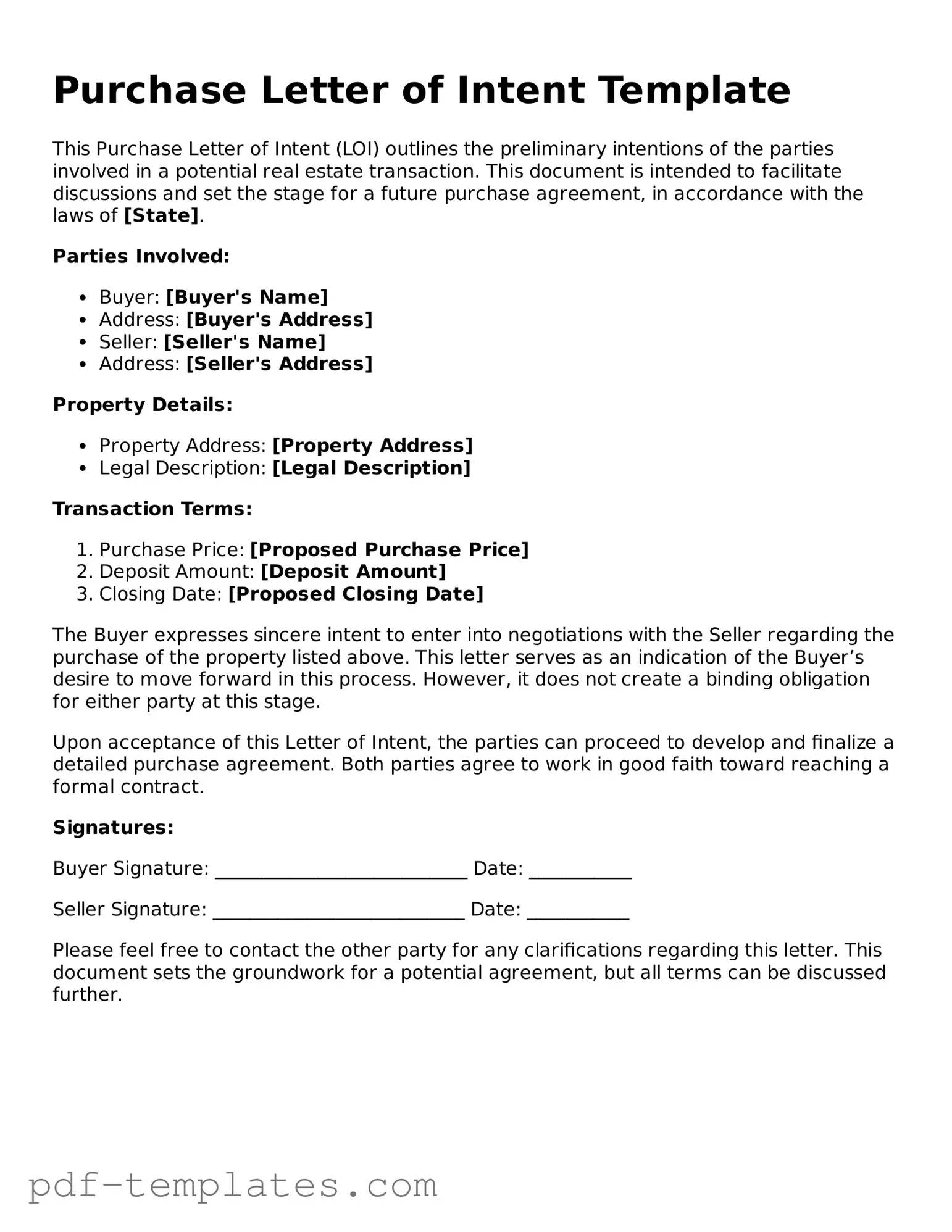When considering a significant investment, such as purchasing a business or property, a Purchase Letter of Intent (LOI) serves as a crucial preliminary document. This form outlines the initial terms and conditions under which the buyer expresses interest in acquiring an asset, signaling a serious intent to move forward with negotiations. Typically, the LOI includes essential details like the purchase price, payment structure, and timelines for due diligence and closing. It often addresses contingencies that may affect the transaction, such as financing or regulatory approvals. While the LOI is generally non-binding, it establishes a framework for further discussions, ensuring both parties are aligned on key aspects before committing to a formal agreement. By providing clarity and direction, this document can help facilitate smoother negotiations and foster trust between the buyer and seller, making it an indispensable tool in the acquisition process.
